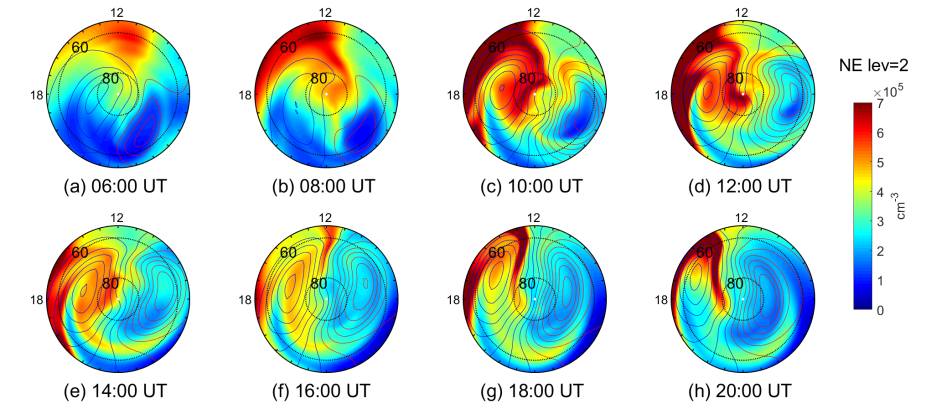Publication Name: Journal of Geophysical Research: Space Physics; First HAO Author: Wenbin Wang; Authors: Dang, T., Lei, J., Wang, W., Wang, B., Zhang, B., Liu, J., et al
During geomagnetic disturbances, enhanced high‐latitude convection transports ionospheric F2‐region plasma from the dayside midlatitude region into the polar cap, leading to structures such as tongues of ionization (TOIs) and patches. In this study, we investigate the dynamic evolution of TOIs during the 17 March 2013 storm using a high‐resolution coupled thermosphere‐ionosphere‐electrodynamics model and Defense Meteorological Satellite Program (DMSP) satellite observations.

Polar maps of the simulated electron density at pressure level 2 (~300 km) in the Northern Hemisphere as a function of geographic latitude and local time on 17 March 2013.
Both model and observations show the occurrence of two TOIs simultaneously. One originates in the morning convection cell and the other one in the evening cell. DMSP observations also show similar signatures of two density peaks inside the polar cap. Further diagnostic analysis and control simulations show that the morning TOI is associated with auroral precipitation and is transported into the polar cap region by the convection electric field. This study reveals that the plasma transport in both the afternoon and morning sectors play critical roles in the dynamic evolution of polar ionospheric structures.
Link to paper: Formation of Double Tongues of Ionization During the 17 March 2013 Geomagnetic Storm